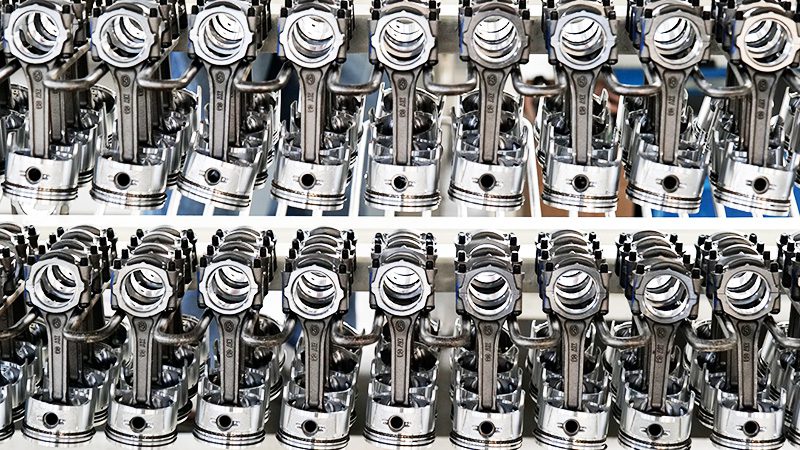Coolant or antifreeze, however you know it, doesn’t come to mind regarding engine systems right away. Such an often-forgotten part prevents your engine from becoming a steaming mess during summer. It also prohibits the system from turning into a solid in freezing winter.
Antifreeze/coolant remains in charge of a vehicle’s temperature regulation system. Negligence can cause overheating, subsequent damage, or complete breakdown. The step-by-step guide should let you check the coolant level by yourself without any mechanical expertise.

Engine Coolant: What is It and Why Does It Matter?
It’s an exclusively formulated liquid for automotive engines. A coolant circulates through the engine + radiator system to regulate the temperature. Standard antifreeze is a mixture of water, ethylene glycol or propylene glycol, and additives.
The chemical cocktail keeps an engine within optimal temperature ranges. Antifreeze absorbs excess heat from the engine. The liquids remove the heat through the radiator. The fluid also resists freezing for smooth startups in sub-zero conditions.
Coolant vs Antifreeze: Are There Any Differences?
Almost everyone uses coolant and antifreeze as regular synonyms. Subtle distinctions prevail between the two from technical perspectives. Antifreeze is a concentrated glycol-based solution.
Coolant is the mixture of antifreeze and water (mostly 1:1) to be poured into your vehicle. Performing a car coolant check means looking into the diluted solution in your antifreeze reservoir.
Why Regularly Check Coolant Level?
- Prevent Costly Damage: Overheating can warp cylinder heads, damage gaskets, or even crack the engine block. Repairs can cost thousands of dollars.
- Maintain Performance: Proper coolant levels ensure your engine runs efficiently. You can reduce potential wear and tear for improved fuel economy.
- Early Detection of Leaks: A quick car coolant check can reveal low levels. Such incidents may indicate leaks, faulty hoses, or a failing radiator cap.
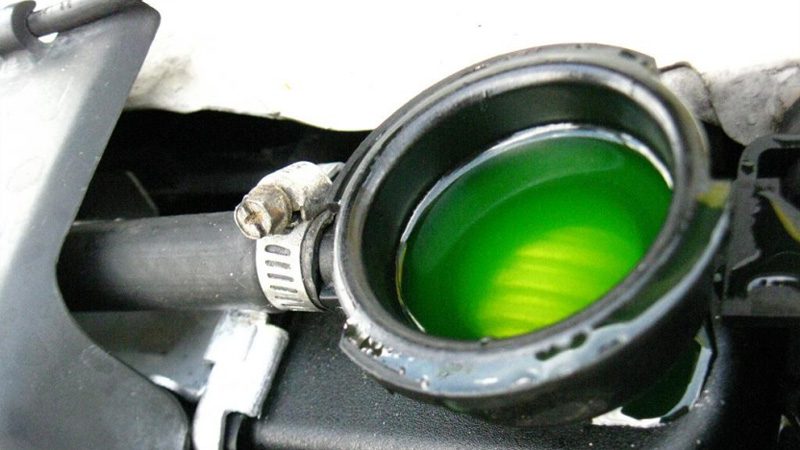
Safety First: Essential Precautions Before Checking Coolant
Popping up the hood and diving into the coolant check isn’t exactly the way to do it. The entire system revolves around liquid, pressure, heat, and hazards. Proper precautions are obligatory to stay safe.
1. When NOT to Check Coolant
Never Check on a Hot Engine: Coolant operates under high pressure when hot. Opening the radiator cap or antifreeze reservoir can release scalding steam or boiling liquid. Pressurized coolant can reach over 120°C (248°F). Even when the engine is off, residual pressure can remain for hours.
2. Safety Equipment
Gear up like a professional coolant tester. You’ll need –
- Safety glasses to protect eyes from splashes/steam.
- Gloves to prevent skin contact with chemicals.
- Clean rags/towels to wipe spills, clean reservoir cap.
- Flashlight to improve visibility in tight engine bays.
- Fitted clothing to avoid loose sleeves or jewelry.
Ethylene glycol is somewhat toxic. Worse, the sweet taste attracts animals that can become fatal upon ingestion. In case of spills, clean immediately and keep pets/children away.
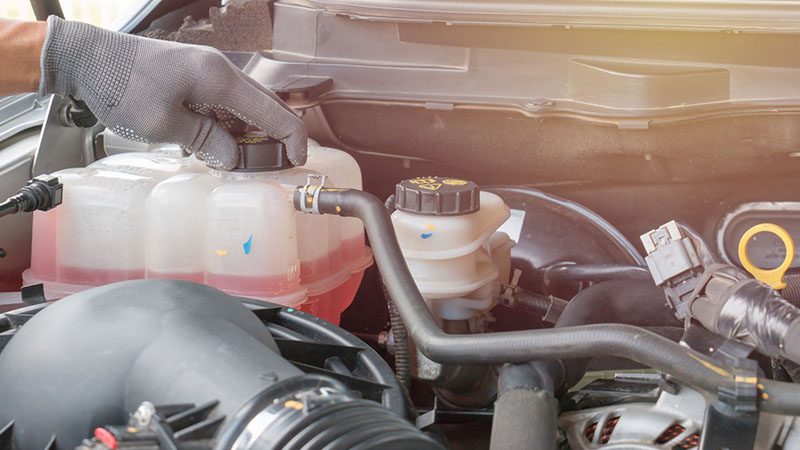
3. Understanding Pressure Systems
Coolant systems are pressurized to raise the boiling point of the fluid. It allows engines to operate efficiently at extreme temperatures. This pressure is maintained by the radiator cap.
It acts as a valve to release excess pressure when needed. Removing the cap on a hot system can cause a sudden release of pressure, ejecting hot coolant and steam. Warning signs of pressure include –
- Hissing sounds near the radiator/reservoir.
- Swollen hoses.
- Steam is escaping from under the hood.
Over 15,000 burn injuries annually are linked to automotive maintenance involving hot fluids or pressurized systems. For a suspected pressure buildup, wait longer or consult a mechanic.
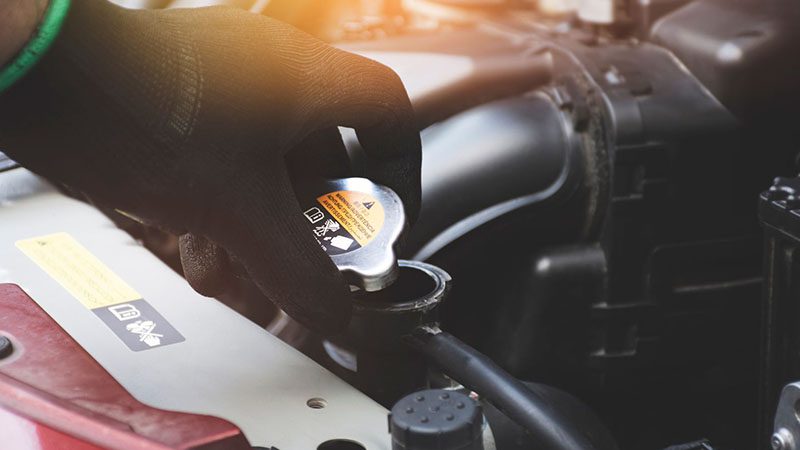
Locating the Coolant System: Know Where to Look First
Finding the Coolant Reservoir
The coolant reservoir or the overflow tank usually rests near the front or side of the engine bay. It’s a translucent plastic container to keep the coolant level visible without any opening. Identify it by –
- Looking for a white or clear plastic tank with colored fluid inside.
- The tank should have MIN/MAX or COLD/HOT markings on the side.
- Hold a label like “Coolant” or “Engine Coolant” on the filler cap.
The reservoir is different from the cap, which sits directly on the radiator. The reservoir is for safe visual checks and top-ups. The radiator cap of the pressurized system should never be opened when hot.
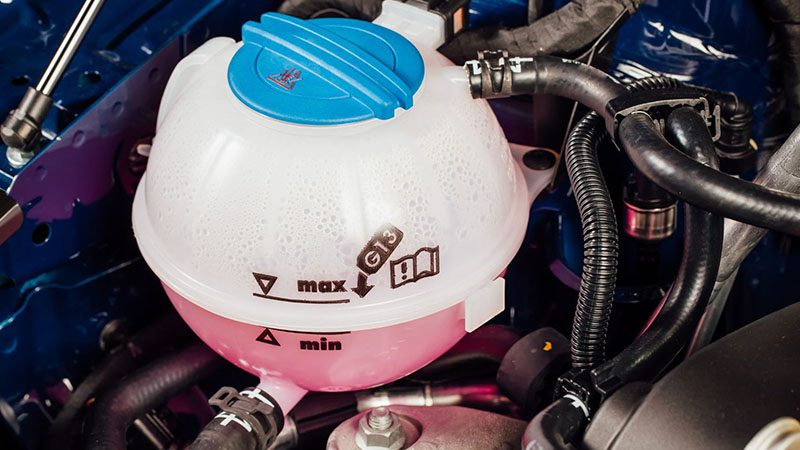
Understand the System Type
Not all cooling systems are created equal. Knowing your system type can determine where and how to check the coolant safely.
- Sealed cooling systems have no radiator cap. You can add the coolant only through the reservoir. The pressure is regulated through the reservoir cap in newer models.
- Open cooling systems feature a radiator cap with a reservoir. You can add the coolant directly to the radiator when the engine is cool. It’s relatively common in older models.
- When your radiator has a cap, it’s likely an open system. If the reservoir is the only access point, it’s a sealed system. Sealed systems often have pressurized reservoir caps.
About 65% of vehicles manufactured after 2015 feature sealed cooling systems. It’s because of the improved safety and efficiency.
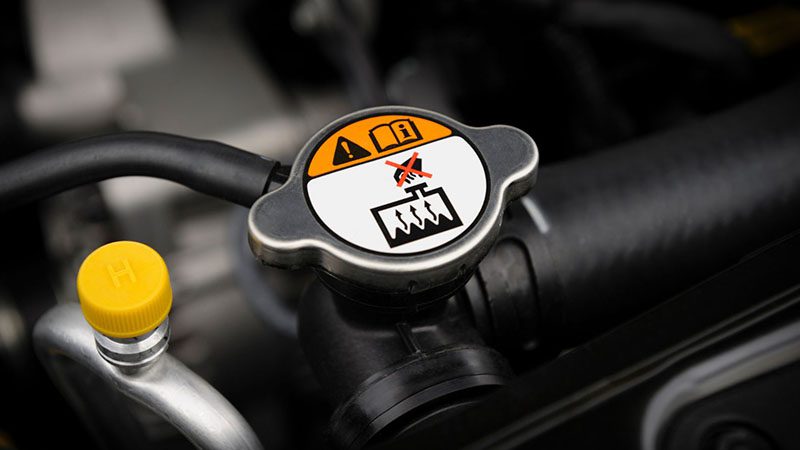
Step-by-Step: How to Check Coolant Level Like a Pro
Step 1: Prepare Your Vehicle
Park on a level surface to ensure accurate readings. Turn off the engine at a safe place. Wait at least 30 minutes to allow the system to cool. Hot coolant is pressurized and dangerous.
Engage the parking brake for stability while working under the hood. Pop the hood and locate the coolant reservoir. Refer to your owner’s manual or look for a diagram under the hood.
Step 2: Visual Inspection
Examine the reservoir exterior. Look for cracks, discoloration, or warping throughout the process. Check the ground underneath. Puddles of green, orange, or pink fluid may indicate a leak.
Inspect connecting hoses. Feel for soft spots, bulges, or cracks. These are signs of wear that could lead to coolant loss. Cooling system leaks are responsible for 1 in 5 overheating-related breakdowns.
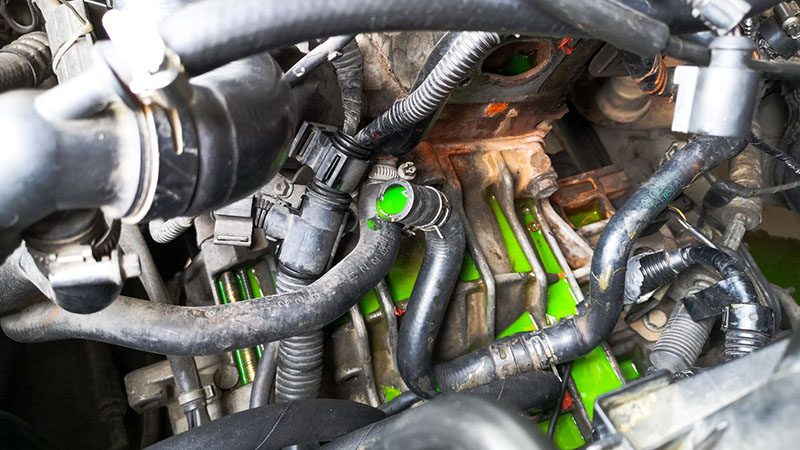
Step 3: Reading the Coolant Level
Locate the MIN and MAX markings on the side of the reservoir. Check the level against the COLD markings only when the engine is cool.
Understand hot vs cold readings as well. When cold, the coolant should be between MIN and MAX, ideally closer to MAX. When hot, the level may rise slightly due to expansion.
If the coolant is below MIN when cold, top it up. When it’s above MAX, especially when cold, it may be overfilled or indicate pressure issues.
Step 4: Assessment for Quality Coolant
- Color: Green indicates conventional coolant (older vehicles). Orange/Pink denotes extended-life coolant (OAT/HOAT). Blue appears in some Asian cars (Honda, Subaru).
- Clarity: The coolant should remain bright and clear. Cloudy or rusty fluid suggests contamination.
- Consistency: The liquid should typically feel smooth and watery instead of appearing thick or sludgy.
- Debris/Particles: Their presence indicates internal corrosion, gasket failure, or breakdown of additives.
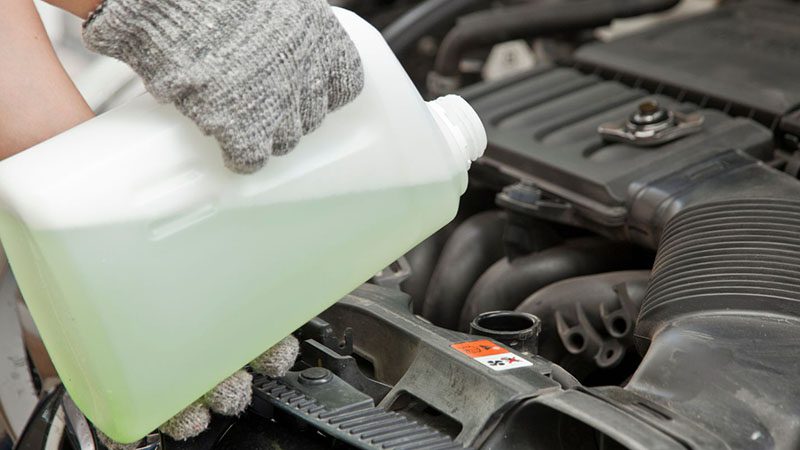
Step 5: Documenting Your Findings
Record the date of your check. Note the level and condition (“Coolant at MAX, bright orange, clear”). Use a notebook, spreadsheet, or app to track fluid checks, top-ups, and replacements. Most coolants last 2 – 5 years, depending on type. Logging your checks can keep up with your refill or replaced timing.
Reading the Results: What Do Different Coolant Levels Mean?
1. Proper Coolant Level
The ideal coolant level sits between the MIN and MAX lines on the reservoir in a cold engine. It ensures there’s enough coolant to regulate temperature without overpressurizing the system.
a. Seasonal Considerations:
Engines run hotter in summer. So, coolant expansion is more noticeable. Slightly below MAX when cold seems ideal. The coolant contracts more in winter. It should remain mid-range (between MIN and MAX). Always check the coolant in the morning (before driving) for the most accurate reading.
b. Normal vs Concerning Variations:
Slight fluctuations over time are normal due to temperature changes. Frequent top-ups or noticeable drops between checks may signal a leak or internal issue. Coolant leaks account for 40% of engine overheating cases, often due to an unnoticed gradual loss.
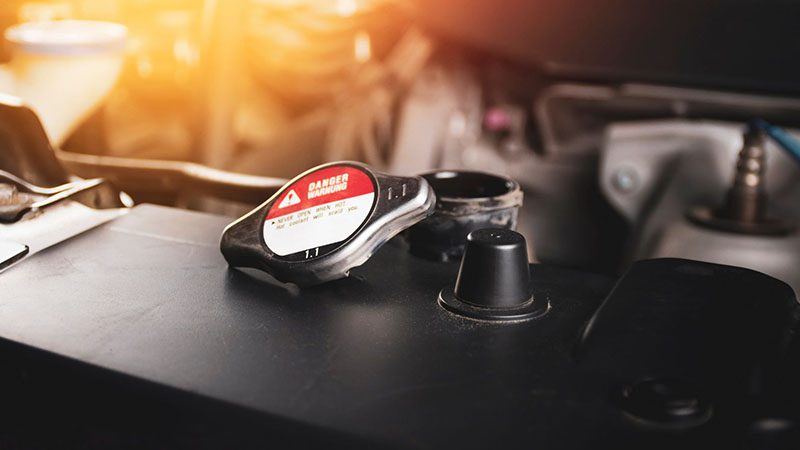
2. Low Coolant Level Indicators
If the coolant level is below the MIN line, it’s a red flag. This is one of the most common signs of low coolant. It can lead to serious damage if ignored. Implications include –
- Reduced ability to regulate engine temperature.
- Increased risk of overheating, especially in traffic or hot weather.
- Potential air pockets in the system to disrupt circulation.
a. Gradual vs Sudden Drops
Small leaks, evaporation, or worn hoses initiate gradual drops. A sudden drop may indicate a burst hose, a cracked radiator, or a blown head gasket.
b. When It Becomes Critical
When the coolant is below MIN and the engine is running hot, stop driving. If you see steam, smell sweet odors, or get a dashboard warning, pull over and let the engine cool before inspecting.
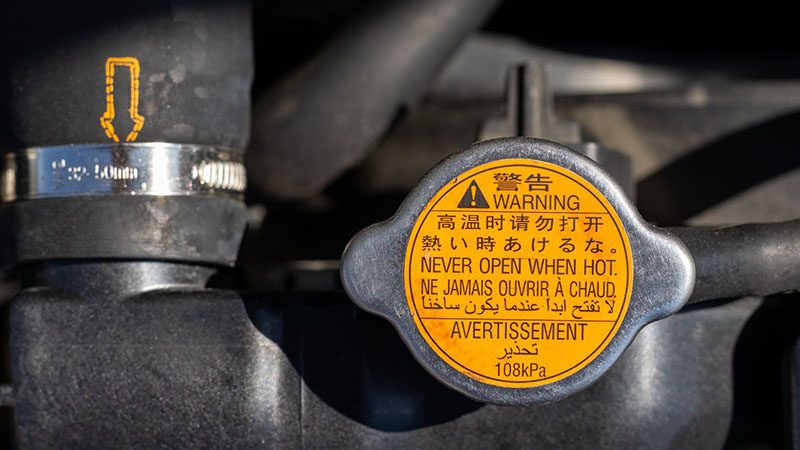
3. Overflow Tank Signs
Coolant expands as it heats. No room to expand means rapid pressure buildup. It can potentially trigger a relief valve or cracking components. Risks of overfilling –
- Increased system pressure can damage seals and hoses.
- Overflow from the reservoir leads to slippery spills and environmental hazards.
- Reduced space for coolant expansion causes backflow or leaks.
Radiator caps are designed to release pressure at 13 – 16 psi. Exceeding the threshold due to overfilling can compromise the cap’s integrity and lead to leaks.
Use a turkey baster or siphon pump to remove excess fluid (slightly overfilled) from the reservoir. Drain some coolant from the radiator (excessively overfilled) or consult a mechanic.
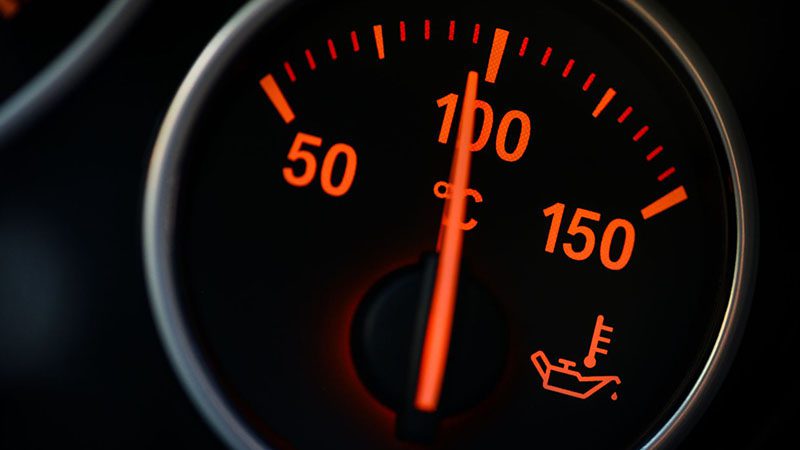
Signs You Need to Check or Top Up Coolant
Warning Signs that Need Immediate Attention
- Dashboard Warning Light: Most modern vehicles have a temperature warning light shaped like a thermometer submerged in liquid. Its illumination is a clear sign that your engine is operating in warmer conditions than usual.
- Overheating Gauge Reading: The temperature gauge may creep into the red zone or fluctuate erratically. This gauge monitors engine temperature in real time, and abnormal readings often point to insufficient coolant or circulation issues.
- Visible Leaks Under the Car: Coolant leaks tend to leave behind a bright green, orange, or pink puddle. These leaks may stem from a cracked radiator, worn hoses, or a faulty water pump.
- Heater Not Blowing Warm Air: A vehicle’s cabin heater uses engine coolant to generate warm air. The heater may suddenly start blowing cold air. Such an occurrence means the coolant level is too low to circulate through the heater core.
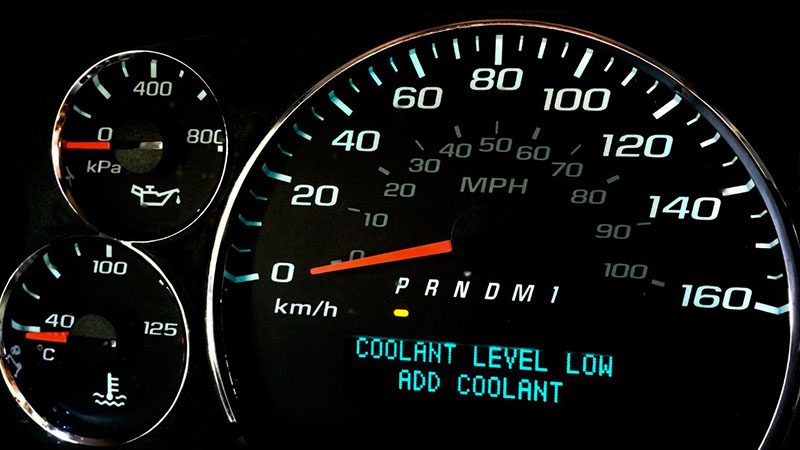
Routine Car Maintenance
Even when you’re relaxed without any warning signs, regular coolant checks are mandatory. Experts recommend –
- Every 3 – 6 months: Perform a basic car check, especially before seasonal changes.
- Every oil change: Make the inspection an integral part of your maintenance checklist.
- Before long trips: Always inspect coolant levels to avoid overheating far from help.
Some Additional Signs to Watch For
- Steam from the hood: Indicates boiling coolant or a leak in the system.
- Sweet smell inside or outside the car: Smelling the distinct coolant odor may point to a leak.
- Low coolant warning message: Some vehicles have sensors to alert you.
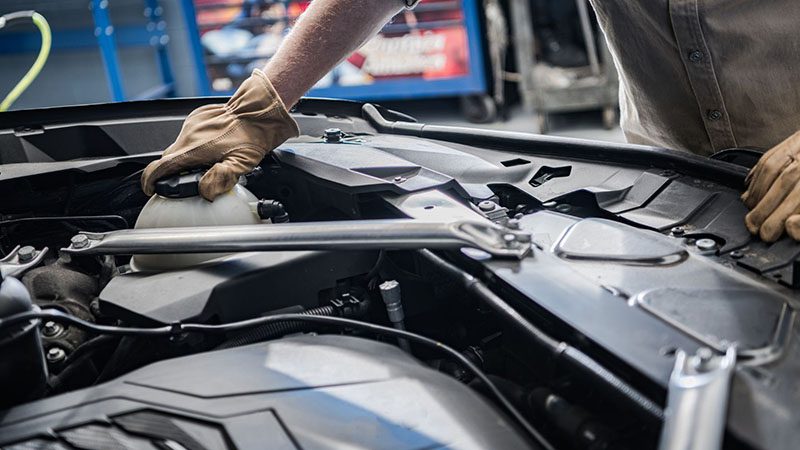
When to Seek Professional Help: Knowing When DIY Isn’t Enough
- DIY-Friendly Tasks: Coolant level checks using the reservoir’s MIN/MAX markings. Top up the coolant with the correct pre-mixed type. Inspect for leaks, hose wear, and fluid clarity. Such tasks are safely manageable for most.
- Professional-Only Situations: Small leaks may be hard to spot and require pressure testing or dye tracing. Removing old coolant and cleaning internal components demands specialized equipment.
- Thermostat or water pumps are buried deep in the engine bay, which requires disassembly. Radiator replacement or cap pressure test strip involves handling pressurized components and ensuring proper sealing.
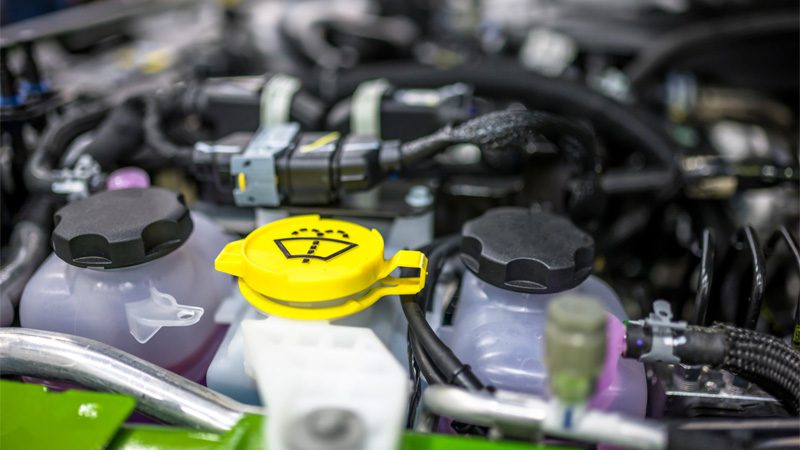
Frequently Asked Questions (FAQs)
Why should I check my car’s coolant level?
Coolant prevents your engine from overheating and protects internal components from corrosion. Regular checks help avoid breakdowns and costly repairs.
What does healthy coolant look like?
Coolant should be clear and brightly colored (green, orange, pink, or yellow). It shouldn’t have any rust, sludge, or oil contamination.
Can I top up the coolant myself?
Yes, when the level is low. Use the correct coolant type (check your owner’s manual). Mix with distilled water if not pre-mixed. Fill only to the “MAX” line—never overfill.
What if my coolant level keeps dropping?
Frequent drops may signal a leak in the radiator, hoses, or water pump. Even internal engine issues, like a head gasket failure, can cause such problems.
How do I know if the coolant reservoir is working effectively?
Coolant should stay between the MIN/MAX lines. If the level is fine but the coolant looks dirty, a flush may be needed. Cracks or leaks around the reservoir are red flags.
What type of new coolant should I use?
Refer to your vehicle’s manual. Common types include IAT (green), OAT (orange/pink), and HOAT (yellow). Use pre-mixed coolant unless specified otherwise.
When should I get a professional coolant flush?
Add coolant after flushing every 48K – 96K km (30K – 60K miles) or 2 – 5 years. It doesn’t apply when the coolant is dirty, sludgy, or contaminated. The same goes for overheating or heater issues.
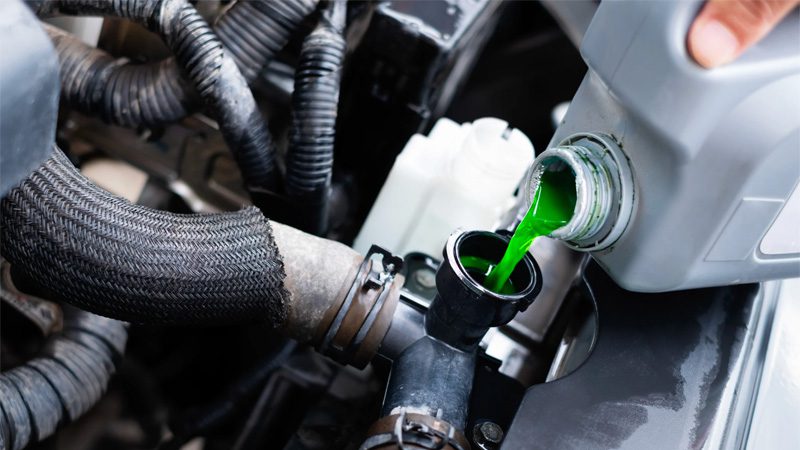
Conclusion
A vehicle’s cooling system is a frontline defence against problem-initiating warmth or coldness. Regular coolant level checking feels like a commitment to safety, longevity, performance, and peace of mind. Simple monthly checks and seasonal inspections help catch issues early. Go for DIY when it’s simple. Call a pro when it’s serious.
Provide Stunning Coolant Services to Car Owners with Woda Auto
Woda Auto has been in the industry for 25 years. We have extensive experience in automotive engines, including coolant systems. You can pair up with our experts to deliver the most satisfactory retail service to car owners. Contact us to know how you can take part in our innovative business solutions.
